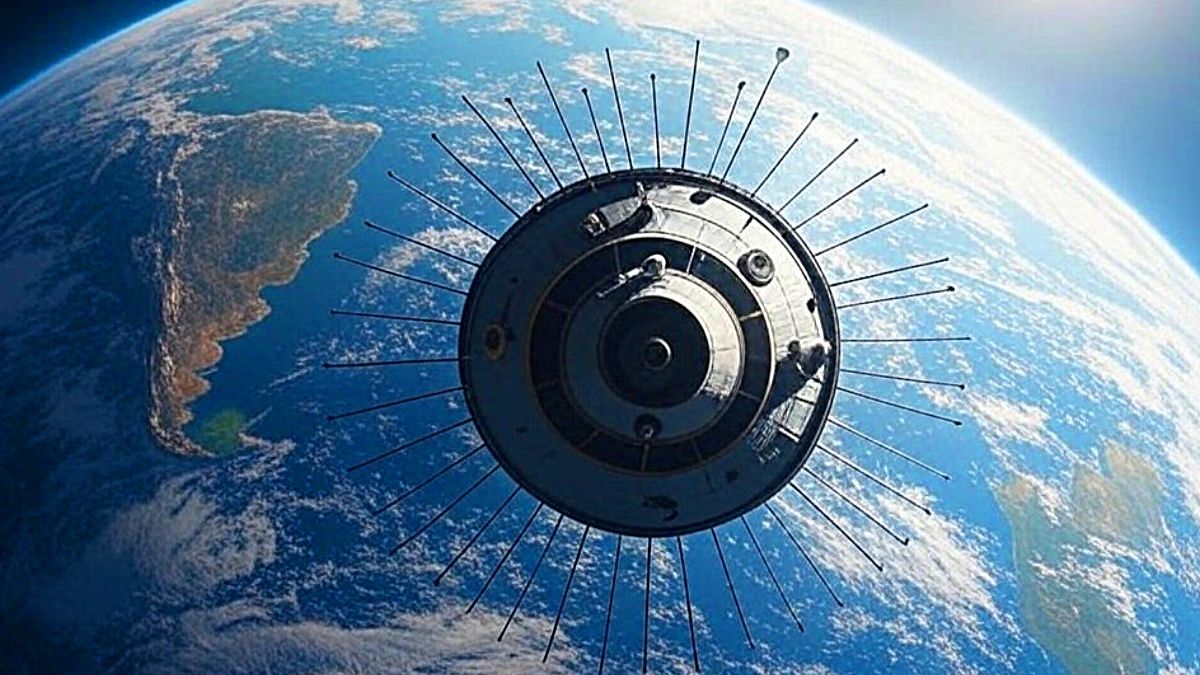A Soviet-era spacecraft launched in the 1970s, which was originally meant to land on Venus, is now expected to crash back to Earth sometime this month.
The Russian spacecraft, Kosmos 482, was launched nearly 53 years ago. It never reached its destination.
ALSO READ | What is Axiom-4 Mission that India’s Sudhanshu Shukla will pilot to space?
Recent satellite data shows that its parachutes may already have been deployed as the spacecraft continues to tumble in low Earth orbit.
Should you be concerned?
We explain when the spacecraft might crash, what the impact could be, and some details about the Kosmos 482 mission.
When is the crash expected? Which regions could be affected?
Nasa has said that Kosmos 482 is expected to reenter Earth’s atmosphere sometime between May 7 and May 13.
The space agency said that the probe was built to survive Venus’ harsh atmosphere, so parts of it may make it through reentry without burning up.
Dutch scientist Marco Langbroek believes that the spacecraft could fall around May 10. If the main section stays intact, he says it may hit the ground at a speed of about 150 mph (242 kph).
Jonathan McDowell, an astronomer at the Center for Astrophysics at Harvard & Smithsonian, told NPR that the probe is now in its “final death plunge.”
“There’s a not-trivial chance that it could hit somewhere where it damages property, and there’s a small chance − but it’s like one in thousands − that it could hurt someone,” he said.
Impact Shorts
More ShortsIt is still uncertain which part of the spacecraft will fall back to Earth, but researchers believe it may be the “entry capsule” - the section built to withstand the intense heat and pressure of Venus’ atmosphere, which is 90 times denser than Earth’s, according to CNN.
The spacecraft could land anywhere between 51.7 degrees north and south latitude. That includes areas as far north as London and Edmonton in Canada, down to Cape Horn at the southern tip of South America.
Still, the exact point of impact would not be known until just before it happens.
Since most of Earth’s surface is water, “chances are good it will indeed end up in some ocean,” Langbroek told Associated Press.
ALSO READ | Space junk: Why Nasa is offering $3 million to recycle astronaut waste in space
Should you be worried?
“While not without risk, we should not be too worried,” Langbroek said.
The spacecraft is quite small and, even if it stays in one piece, “the risk is similar to that of a random meteorite fall, several of which happen each year. You run a bigger risk of getting hit by lightning in your lifetime,” he said.
He added that the chance of the spacecraft actually striking someone or something is low. “But it cannot be completely excluded.”
Jonathan McDowell told NPR, “There’s a not trivial chance that it could hit somewhere where it damages property. And there’s a small chance – but it’s like one in thousands – that it could hurt somebody.”
The Aerospace Corporation, a research group supported by the US government, has estimated the odds of the spacecraft causing serious harm to be about 1 in 25,000, according to space debris expert Marlon Sorge.
What should people do if Kosmos 482 hits dry land?
Sorge told CNN that if Kosmos 482 ends up hitting dry land, people should stay away from any debris.
The old spacecraft may still contain harmful fuel or other hazards that could be unsafe for both people and property.
“Contact the authorities,” Sorge said. “Please don’t mess with it.”
Parker Wishik, a spokesperson for the Aerospace Corporation, told CNN that under the 1967 Outer Space Treaty, which still acts as the key agreement on space law, Russia would still own any parts of the spacecraft that survive. The country might try to retrieve the wreckage after it lands.
Wishik further said that while space agencies have worked to reduce the number of uncontrolled reentries in recent years, Kosmos 482 shows why such efforts need to continue.
ALSO READ | What does a typical day on International Space Station look like?
The mission to Venus
Starting in 1962, the Soviet Union used the name Cosmos (or Kosmos) for spacecraft that stayed in Earth orbit, even if they were meant to go further.
Kosmos 482 was one of a series of Venus missions launched by the Soviet Union in 1972.
After reaching parking orbit around Earth, the spacecraft tried to head towards Venus. But due to a rocket failure, it never left Earth orbit.
The spacecraft broke into four parts, two of them fell back and burned up within 48 hours. The other two stayed in orbit.
Most of the debris returned to Earth within about ten years. However, experts, including Langbroek, believe that the landing capsule, a round object about 3 feet (1 metre) wide, has remained in a long, looping orbit for the past 53 years, slowly losing height over time.
With inputs from agencies
)